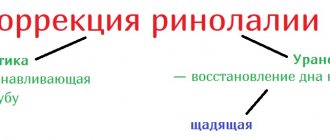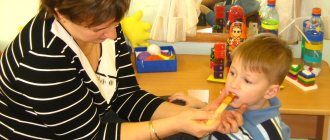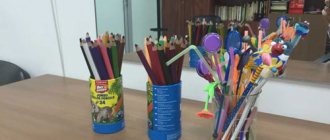Rhinolalia is a speech disorder that occurs due to the structural features of the nasopharynx. The defect characterizes distortion of voice timbre, decreased speech intelligibility, and replacement of sounds. The disorder is corrected with medication, and regular sessions with a speech therapist and specialized exercises are also required.
general description
In recent years, doctors around the world are increasingly faced with the problem of speech disorder in children.
This phenomenon has objective reasons (ecological deterioration, bad habits of parents, which leads to the development of anatomical defects in children, lack of contact with the child due to parents’ employment, and so on). There are several different diseases in which a child develops a speech disorder. One of them is rhinolalia. This concept in medicine refers to disorders of voice formation and sound pronunciation, which are caused by defects in the structure and functioning of the speech organs.
The speech of a child with rhinolalia is characterized by severe disturbances in the pronunciation of sounds, underdevelopment of the grammatical and lexical aspects of speech, and impaired writing.
To identify the disease and find out its causes, the patient needs a comprehensive examination by an ENT or maxillofacial surgeon. Elimination of rhinolalia is carried out using surgical and orthodontic treatment, physiotherapy. In addition, the patient needs the help of a speech therapist and psychologist.
Classification of rhinolalia
The following main forms of the disease are distinguished:
- open rhinolalia - with this form of the disease, air passes simultaneously through the nasal and oral cavities;
- closed rhinolalia - due to the presence of an obstruction, air cannot pass through the nose, which leads to distortion of the pronunciation of sounds;
- mixed rhinolalia - and the patient experiences symptoms of two of the above forms at once, which is why the voice becomes nasal and has a nasal sound.
Based on the causes of occurrence, the following types of disease are distinguished:
1. Organic rhinolalia. Divided into two subspecies:
- open organic rhinolalia - caused by congenital (rarely acquired) defects in the development of the nose or oropharynx;
- closed form - caused by various deformities of the nose.
2. Functional rhinolalia. Also divided into two subspecies:
- functional closed rhinolalia - often a consequence of neurological diseases, air flows through the oral cavity;
- functional open rhinolalia - usually occurs after ENT diseases.
In addition, the following types of rhinolalia are distinguished by localization:
- posterior - is a complication of a deviated nasal septum, polyps or chronic rhinitis;
- anterior - develops as a result of the proliferation of adenoids.
Kinds
Types of nasality:
- closed;
- open;
- mixed.
Closed nasality is the result of poor nasal obstruction and is called rhinophony or palatophonia. Open nasality is called nasality, in which sounds pass not only through the mouth, but also through the nasal passage.
In the mixed form, there is nasal obstruction and a weakened velopharyngeal seal.
Causes of rhinolalia
The etiology of the disease may be different. The congenital form of rhinolalia develops due to the appearance of facial clefts in the initial period of embryonic development.
The causes of the development of such severe pathologies can be nervous shocks, endocrine diseases, bad habits, and some diseases suffered by the expectant mother during pregnancy.
The acquired form may be the result of mechanical damage to the nasal cavity, deformation of the soft palate, injuries to the vagus or nasopharyngeal nerve.
The cause of the open form of the disease may be the removal of the adenoids or the development of paresis of the soft palate after diphtheria. The congenital open form of the disease has such characteristic symptoms that it can be diagnosed immediately after the birth of the baby.
When feeding a baby, milk leaks out of the nose. Due to the disease, the air does not warm up enough, which leads to frequent rhinitis, otitis media, and pneumonia.
The organic closed form of the disease usually develops as a result of damage to the nasal cavity or nasopharynx.
Symptoms of rhinolalia
Clinical manifestations depend on the form of the disease. Open rhinolalia is manifested by breathing problems. As a result, liquid food begins to flow through the nose, which makes feeding the baby very difficult.
The result of the open form of the disease can be a developmental delay in the child. Such a baby pronounces his first word late, has a nasal voice, and finds it difficult to pronounce sounds correctly. The child pronounces most sounds deafly. This is due to the fact that the greatest load during conversation falls on the root of the tongue, and not on its tip.
A symptom of the closed form of the disease is the constant flow of mucus down the back wall of the throat, which greatly worries the child. The baby often suffers from colds, he develops a chronic runny nose, and his pronunciation is impaired.
Many experts believe that such speech defects affect the child’s psyche and make him more withdrawn compared to his peers. Such a child prefers to spend more time at home, he speaks little and is reluctant to make contact with strangers.
Recommendations for parents
If the baby breathes through his nose but speaks nasally, experts recommend massage of the soft palate. It is aimed at stimulating his mobility. Doing this massage is quite simple.
- Gently rub the area between the soft and hard palate. This will lead to a reflex contraction of the nasopharyngeal muscles.
- Ask your child to say the sound “a” and then stimulate the massaged area.
- Run your fingertip from the right side of the palate to the left in a zigzag pattern, and then in the opposite direction. In this case, the child should breathe through his nose.
- Lightly press the soft palate with your fingertip so that its muscles become toned.
Remember that massage should not be done when the child has snot, or after eating. It may cause vomiting. Ideally, if your baby speaks through his nose, you should massage him regularly on an empty stomach.
Diagnosis of rhinolalia
A comprehensive examination for rhinolalia. A large number of different specialists can participate in its implementation (ENT, psychologist, dental surgeon, phoniatrist, speech therapist and a number of others).
During a speech therapy examination, the doctor pays special attention to the structural features and degree of mobility of the patient’s speech apparatus and identifies voice disorders.
To diagnose the open form of the disease, a special test is performed, the essence of which is that the patient pronounces the sounds “i” and “a” by sequentially opening and closing the nose. When the nasal passages are pinched, sounds become muffled, and the wings of the nose vibrate strongly under the specialist’s fingers.
In addition, the doctor checks the patient’s pronunciation of all sounds, evaluates vocabulary, level of grammar and vocabulary. If the child is already in school, then the level of writing and reading is assessed.
Of the instrumental methods, rhinoscopy, electromyography, radiography of the nasopharynx, and pharyngoscopy are most often used.
Based on the data obtained as a result of a comprehensive examination of the patient, the doctor makes a final diagnosis and prescribes corrective therapy.
You should not ignore the problems that arise in a child with rhinolalia. In the absence of timely treatment, the disease progresses, which can cause the development of a number of complications.
Prevention
To prevent the appearance of nasality and further complications, the following recommendations must be followed:
- monitor the condition of the nasopharynx; if there is the slightest change, you should consult a doctor;
- avoid colds and viral diseases;
- pay attention to how you pronounce individual sounds and words;
- if surgical intervention is necessary, do not delay, otherwise the consequences of such a delay can be very serious for health;
- Avoid hypothermia and maintain a proper daily routine.
Treatment of rhinolalia
Comprehensive correction of rhinolalia includes:
- surgical correction of defects (if indicated);
- orthodontic treatment and preventive measures aimed at preventing repeated deformations of the patient’s speech apparatus;
- regular sanitation of lesions to prevent hearing loss;
- exercise therapy;
- help from a psychotherapist.
Both closed and open rhinolalia in children should be treated as early as possible in order to complete therapeutic measures before the onset of puberty.
The main directions of speech therapy correction of rhinolalia are:
- normalization of breathing (both physiological and speech);
- control over the overall development of the child’s speech skills;
- restoration of physiologically correct closure of the pharynx and palate;
- preventing the development of pathologies such as dyslexia and dysgraphia;
- formation of correct articulation in the patient;
- production of sounds for rhinolalia;
- elimination of nasal voice;
- consolidation of acquired skills.
Corrective work requires a lot of patience and endurance, both from the doctor and from the patient, as well as from his parents, who must take an active part in the therapy process and work with the child additionally according to the recommendations of the speech therapist.
The doctor must constantly correct the child’s speech, monitor whether he is breathing and articulating correctly.
The effectiveness of rhinolalia correction depends on many internal and external factors. The result of treatment is considered positive if the child gets rid of the nasal tone in his voice and normalizes his speech, clearly pronouncing all sounds.
When preparing a child with rhinolalia for school, it is necessary to take into account psychological aspects, preparing him for what he can expect in class. During school, it is necessary to correctly distribute the child’s workload so that he does not get overtired and has time not only to do his homework calmly, but also to work with a speech correction specialist.
1.General information
Such a well-known phenomenon as nasality, only at the level of ordinary consciousness or pseudo-medical practices may seem self-evident, simple, and does not require special explanation. In reality, this complex acoustic phenomenon is caused by pathological changes in the unique phonation-articulatory (speech-sound) apparatus of a person, which can arise under the influence of many reasons and take a number of significantly different clinical forms.
It should be noted that the scope and content of the very concept of “nasal”, as well as the terminology used in texts devoted to this phenomenon, differ depending on which medical specialty the publication relates to - phoniatry, speech therapy, pediatric or general otorhinolaryngology, ENT -surgery, etc. In particular, such terms as rhinolalia (“nasal speech”), rhinophonia (“nasal sound”), palatophonia/lalia (palatal sound/speech) are used with slightly different meanings. In English-language literature one can also find the expression “hypernasal speech”, equivalent to the Russian “speak through the nose”, etc.
In general, nasal voice and/or speech is a serious problem that impairs social functioning, reduces quality of life and, even in moderate severity, precludes suitability for a number of professions. Eliminating this violation is usually quite difficult; it requires time and significant effort, incl. from the patient himself.
A must read! Help with treatment and hospitalization!
Forecast of rhinolalia
If treatment is started on time and completed, the prognosis is favorable. When selecting a correction program, it is necessary to take into account the child’s age, level of development and intelligence. Class materials should be understandable and interesting to the child. This is the only way to make progress in treatment.
In addition, the effectiveness of therapy depends on the following factors:
- how timely treatment was started;
- does the child have any concomitant pathologies?
- how successfully the surgical intervention was performed;
- how developed the child is intellectually, and what is his character and a number of others.
The willingness of parents to get involved in the process and spend a large amount of time on independent activities with their child is crucial. The functional form of the disease has the most favorable prognosis.








